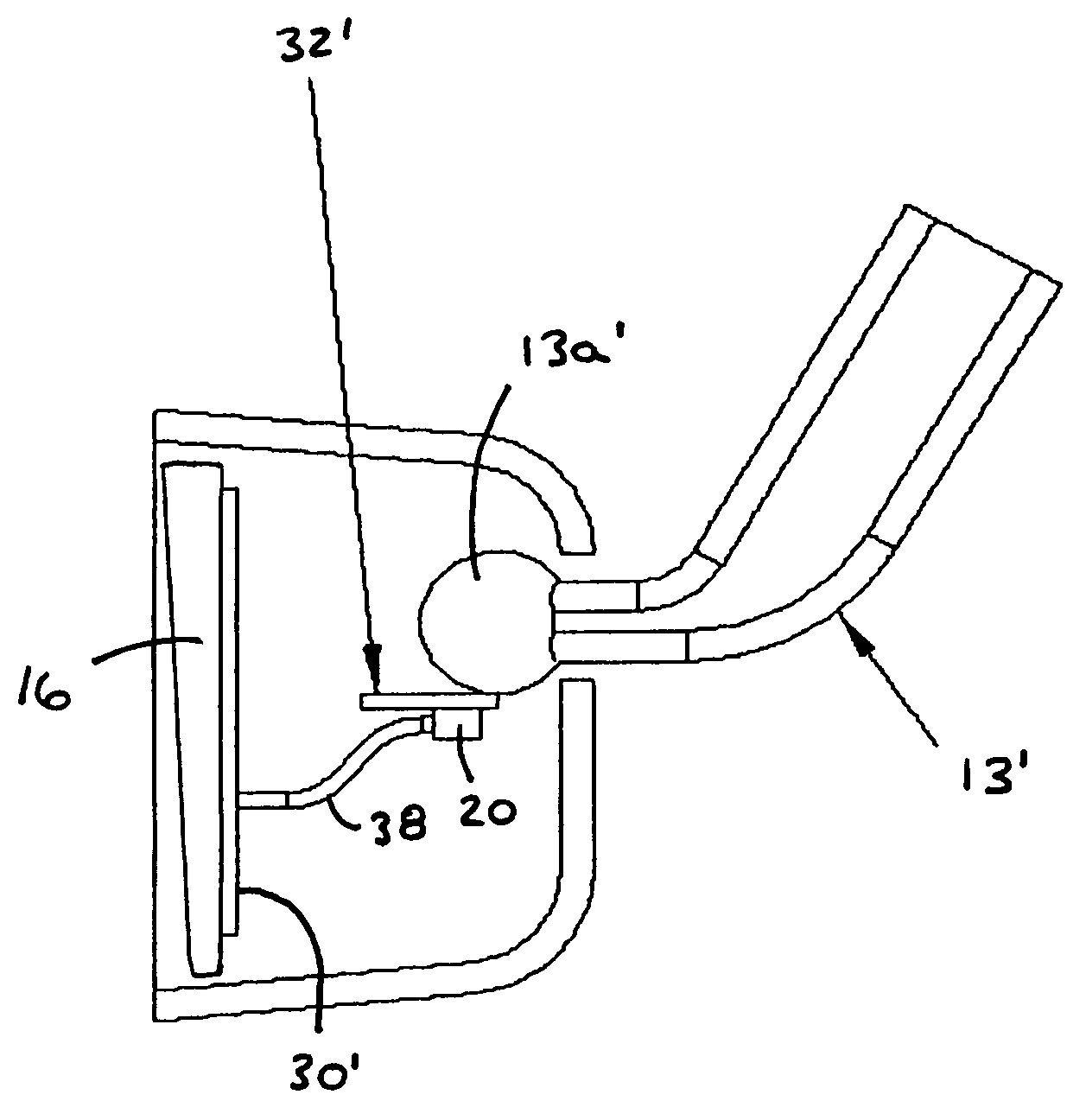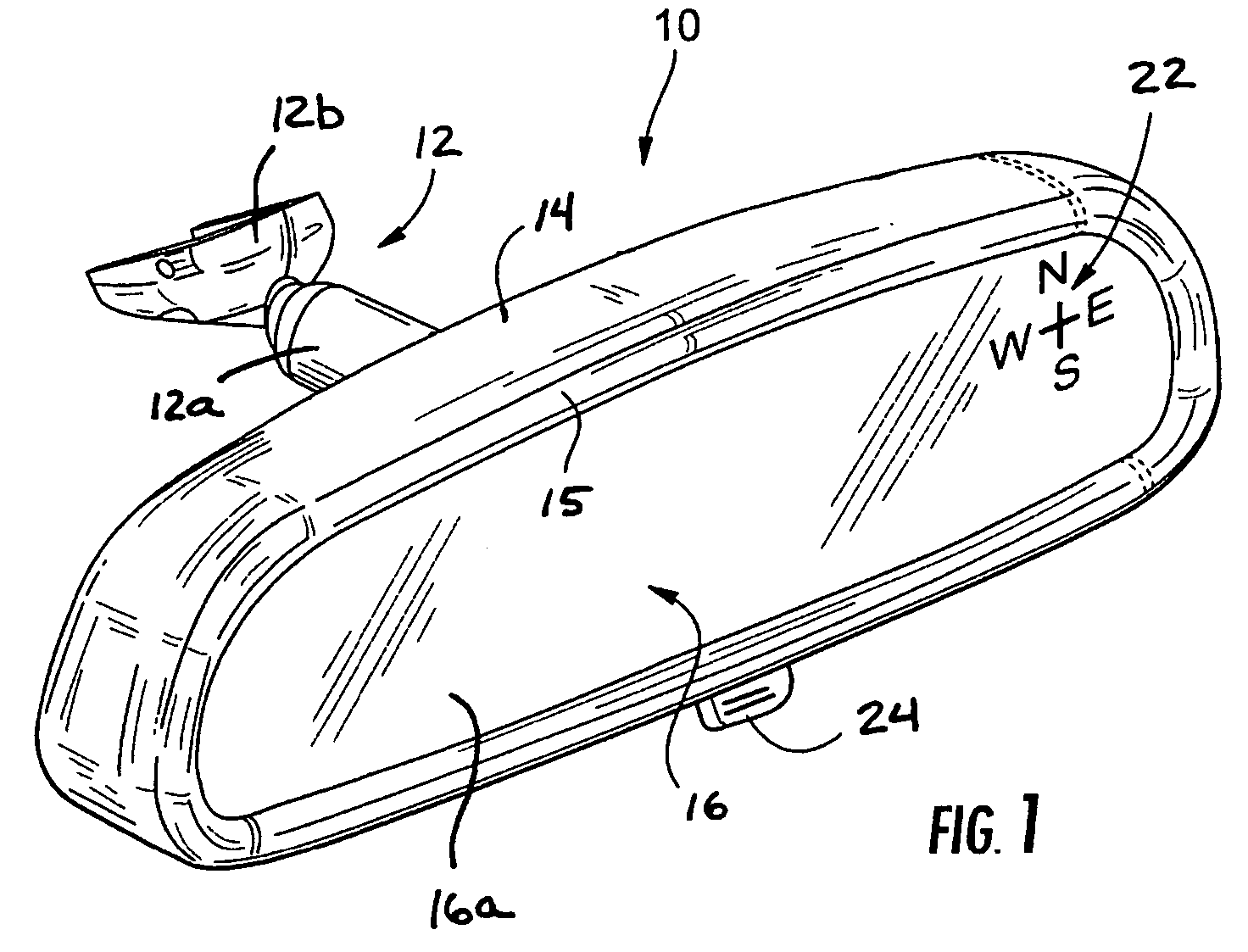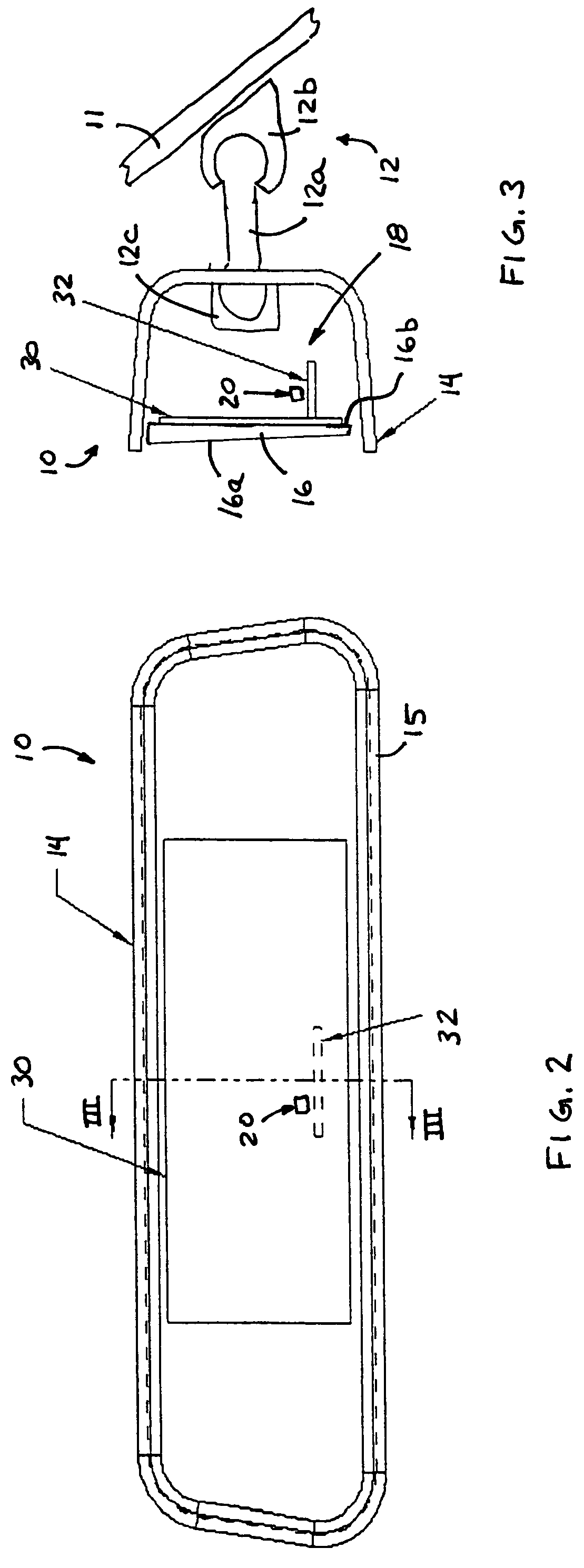Interior rearview mirror system with compass
a technology for rearview mirrors and mirror assemblies, which is applied in the direction of optical elements, instruments, transportation and packaging, etc., can solve the problems of high cost of compass mirror assemblies, inability to adapt to use with double ball or double pivot mirror assemblies, and special tooling of compass systems described in the patents referenced above, so as to reduce the effect of mirror adjustment on the performance of compass sensors, reduce the effect of such items on the compass sensor performance, and reduce the effect of mirror
- Summary
- Abstract
- Description
- Claims
- Application Information
AI Technical Summary
Benefits of technology
Problems solved by technology
Method used
Image
Examples
Embodiment Construction
[0024]Referring now to the drawings and the illustrative embodiments depicted therein, a compassized prismatic interior rearview mirror assembly or system 10 includes a double pivot or double ball mounting arrangement 12 for pivotally or adjustably mounting a casing 14, bezel portion 15 and prismatic reflective element 16 of mirror assembly 10 relative to an interior portion of a vehicle, such as to an interior surface of a windshield 11 of a vehicle or the like (FIGS. 1-3). The mirror assembly 10 includes a compass system 18, which includes a magnetoresponsive compass sensor 20 and a display 22 for providing a display or indication of the directional heading of the vehicle, such as at the reflective element 16 of the mirror.
[0025]The mirror casing or housing 14 may comprise a polypropylene material or the like and is adjustably mounted to a mirror mount (not shown) positioned at an interior portion of a vehicle, such as a mirror mounting button on a windshield of the vehicle or any...
PUM
 Login to View More
Login to View More Abstract
Description
Claims
Application Information
 Login to View More
Login to View More - R&D
- Intellectual Property
- Life Sciences
- Materials
- Tech Scout
- Unparalleled Data Quality
- Higher Quality Content
- 60% Fewer Hallucinations
Browse by: Latest US Patents, China's latest patents, Technical Efficacy Thesaurus, Application Domain, Technology Topic, Popular Technical Reports.
© 2025 PatSnap. All rights reserved.Legal|Privacy policy|Modern Slavery Act Transparency Statement|Sitemap|About US| Contact US: help@patsnap.com



